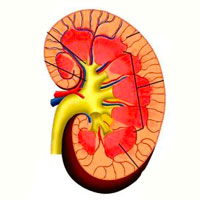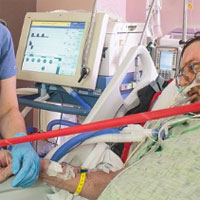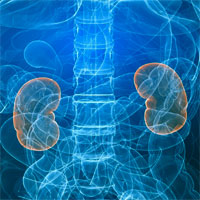Tag: sepsis

Delay Within the 3-Hour Surviving Sepsis Campaign Guideline on Mortality for Patients With Severe Sepsis and Septic Shock
The guideline recommendations showed that shorter delays indicates better outcomes. There was no evidence that 3 hours is safe; even very short delays adversely impact outcomes. Findings demonstrated a new approach to incorporate... read more

A Comparison of the qSOFA and SIRS Criteria for the Diagnosis of Sepsis and Prediction of Mortality
Several studies were published to validate quick-SOFA (qSOFA), namely in comparison with Systemic Inflammatory Response Syndrome (SIRS) criteria. We performed a systematic review and a meta-analysis with the aim of comparing... read more

Urinary Oxygenation as a Surrogate Measure of Medullary Oxygenation During Angiotensin II Therapy in Septic AKI
In septic acute kidney injury (AKI), renal medullary and urinary hypoxia developed several hours before increases in currently used biomarkers. Angiotensin II transiently improved renal function without worsening medullary... read more

FDA Approves Angiotensin-II for Septic Shock
The FDA approved angiotensin-II (Giapreza) as a new intravenous vasopressor for septic shock and other forms of distributive shock. The first new FDA-approved vasopressor in decades, angiotensin-II could significantly change... read more

The Hidden Faces of Sepsis, What Do They Tell Us?
Based on the patients' perspective Nutma sheds light on the hidden faces of sepsis, calling for more expertise on sepsis sequelae. She also offers recommendations to improve recovery and outcome. Sepsis really caught me by... read more

Causes of Mortality in ICU-Acquired Weakness
Intensive care unit–acquired weakness (ICU-AW) is a common complication of critical illness and is associated with increased mortality, longer mechanical ventilation and longer hospital stay. Little is known about the causes... read more

Guidelines for the Diagnosis and Management of Critical Illness-Related Corticosteroid Insufficiency – Part I
Evidence-based recommendations for the use of corticosteroids in critically ill patients with sepsis and septic shock, acute respiratory distress syndrome, and major trauma have been developed by a multispecialty task force.... read more

Treating Acid–Base Abnormalities in the ICU
Acidemia has both harmful and beneficial biological effects. Sodium bicarbonate is generally ineffective in raising pH when ventilation is limited, as in patients with ARDS. Even when alkalinizing agents can correct the pH,... read more
The Epidemiology of Hospital Death Following Pediatric Severe Sepsis
Margaret Parker, MD, MCCM, speaks with Scott L. Weiss, MD, MSCE, about the article, "The Epidemiology of Hospital Death Following Pediatric Severe Sepsis: When, Why, and How Children With Sepsis Die," published in the September... read more

The 10 False Beliefs in Adult Critical Care Nephrology
Acute tubular necrosis (ATN), a histological pattern observed after ischemic insult, is considered the most frequent cause of any form of acute kidney injury (AKI) despite the absence of extensive histological data. This... read more

Prehospital Antibiotics in the Ambulance for Sepsis
Emergency medical services (EMS) personnel have already made substantial contributions to improving care for patients with time-dependent illnesses, such as trauma and myocardial infarction. Patients with sepsis could also... read more

Tissue Edema, Fluid Balance, and Patient Outcomes in Severe Sepsis
Severe sepsis and septic shock remain among the deadliest diseases managed in the intensive care unit. Fluid resuscitation has been a mainstay of early treatment, but the deleterious effects of excessive fluid administration... read more

iSepsis – A 30ml/kg Bolus: Yes or No -The Results
The results of both surveys are not surprising. This recommendation has never been prospectively tested in a large RCT and has little supporting evidence. Imagine the American Heart Association (AHA) or the American Diabetes... read more

New Sepsis Definition (Sepsis-3) and Community-acquired Pneumonia Mortality
qSOFA and CRB outperformed SIRS and presented better clinical usefulness as prompt tools for patients with community-acquired pneumonia in the emergency department. Among the tools for a comprehensive patient assessment,... read more








